|
|
|
This page of the Building-Stone Gallery visits the Tour Magne, a Roman hill-top tower that was part of the walls of the city of Nimes, in southern France. Built atop an earlier Celtic/Gallic tower, the Tour Magne was built in 15 to 14 B.C.
|
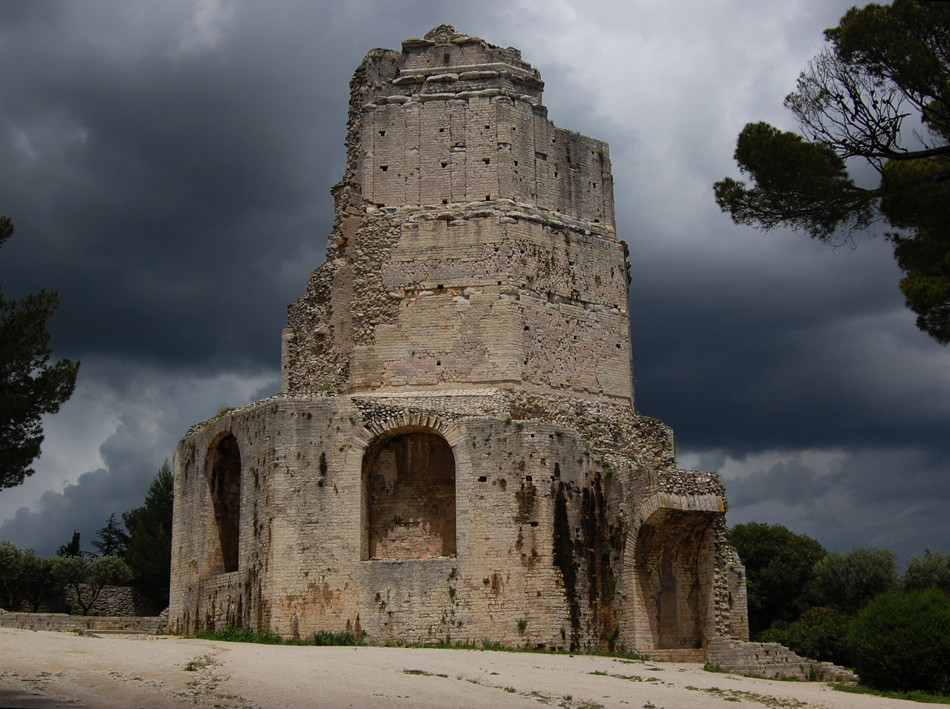
|
| There's also an
alternate view of the Tour Magne in very different light - note the five-feet-and-ten-inch person for scale.
The tower is now a ruin, and one may find it helpful to compare the image above with these reconstructions of its appearance in Roman times:
|
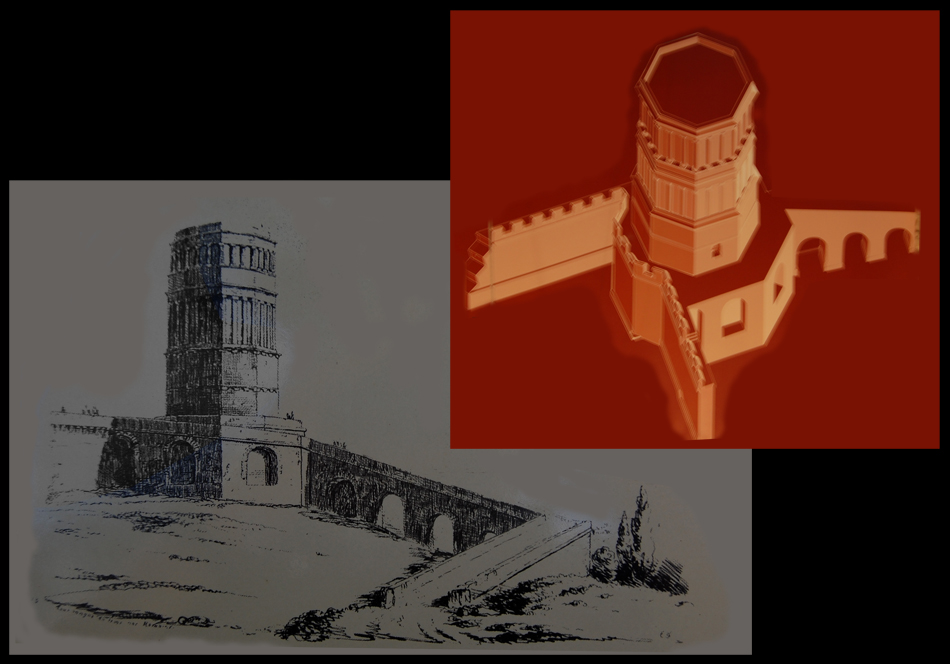
|
|
The tower was built of the featureless limestone shown below. It is tan where fresh (F) and gray when weathered (W), and beige and crystalline-looking where pieces have broken along natural planes of fracture-filling calcite (C). The Romans quarried stone nearby, and a quarry can be seen to the west. The stone is thus presumably local, and in fact the exposures of limestone in the park below the tower look so much like the tower's stone that they could have been its source.
|
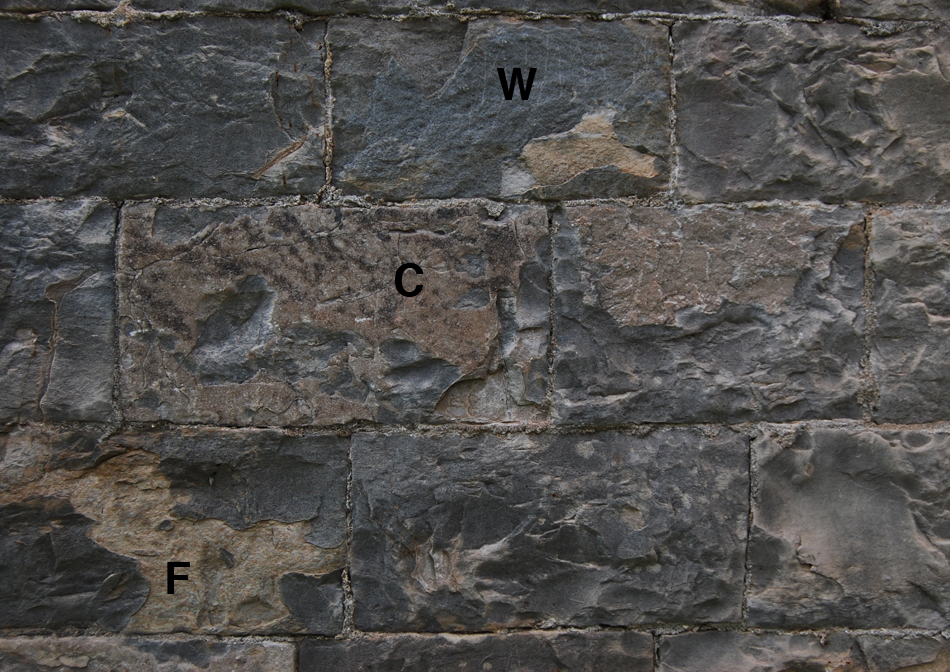
|
|
The stonework is quite good, with flat-faced parallel-sided stones like those above. For a contrast, compare below the fine Roman stonework at right with the coarse modern stonework at left, where the uppermost walls were extended to enclose the modern viewing platform.
|
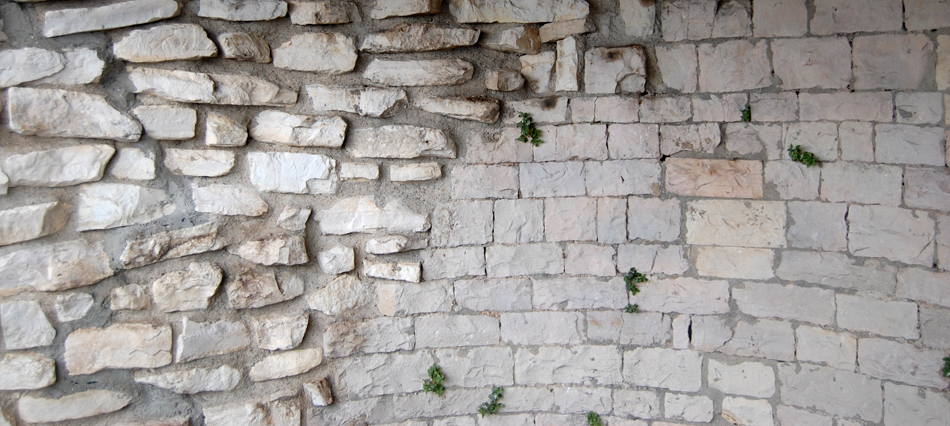
|
|
With all that said about the good stonework, the disrepair of the Tour Magne allows one to see the underlying realities of good stonework. The access ramp has been chopped away abruptly, allowing one to see a cross section of the stonework. This sequence of views from left to right shows that cut:
|
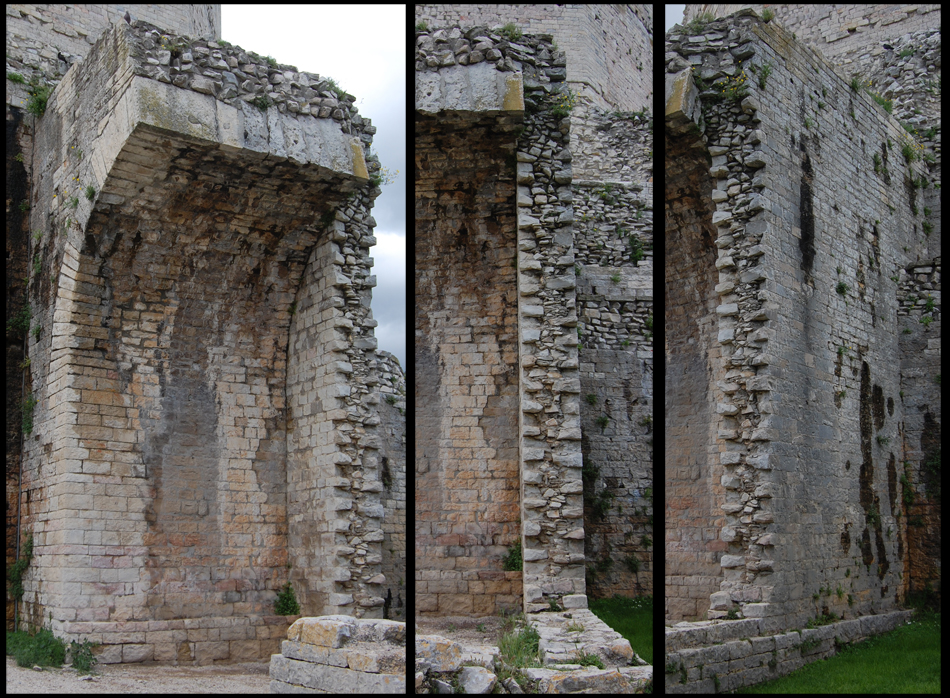
|
|
Now look at the detailed view of the cross-section of wall, at left in the image below:
|

|
|
The point of all this is that the interior of this wall of well-fit external blocks is a jumble of ill-fit interior stones. Some of those interior stones support the angled bases of the exterior blocks. The remarkable order and fit apparent on the two faces of the wall conceal much more of a mortar-rich jumble, but a stabilizing jumble, on the inside.
The same becomes apparent as one approaches the entry to the tower, as seen in the image below. Much of the smooth facing stone apparent to the left and right has been lost above the entryway. Again, this loss reveals a much more mortar-rich section of loose- fitting stones that would have been covered by the smooth facing stones - smooth facing stones that disappeared sometime during the last two thousand years.
|
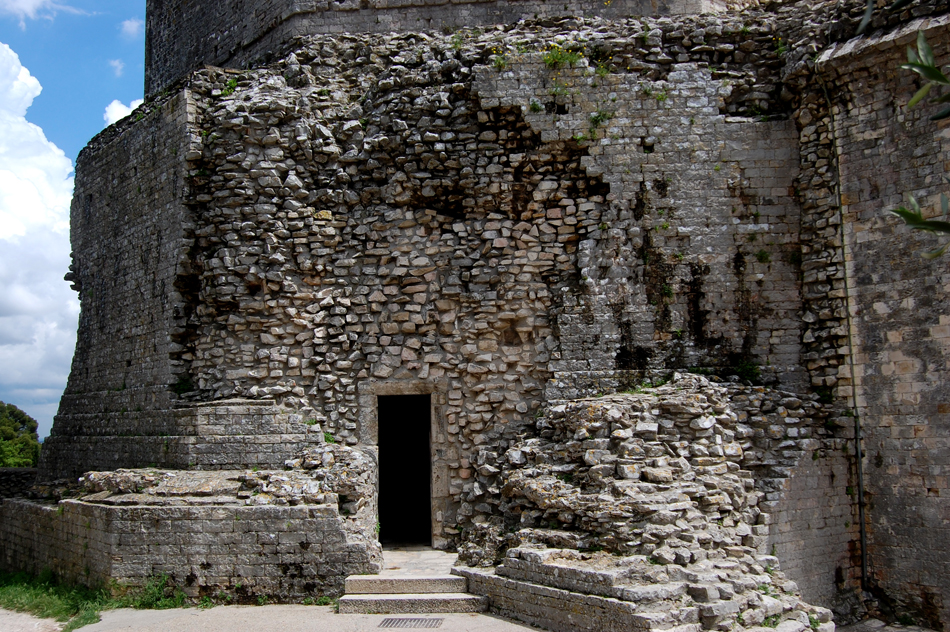
|
|
Those two thousand years have seen many changes in the Tower. It stood as part of the defenses of Nimes for centuries. Then, in the twelfth century, a local gardener read in the predictions of Nostradamus that a great treasure would be found in an ancient building in Nimes, and he obtained permission from King Henri IV to excavate in the tower. His excavations eliminated the Celtic tower that preceded the Roman one, and he nearly destroyed the Roman tower, making necessary a modern large interior pillar around which visitors climb to reach the top of the Tour Magne.
More recently, the tower took on a new life when it was used as part of the of optical telegraph system across the south of France. Atop the tower was a vertical shaft, to which a mobile crosspiece was attached, at each end of which was another smaller mobile crosspiece (see the right-hand image below). This contraption was manipulated to serve as a semaphore sending signals from one relay post to the next. The tower's prominence made it ideal for this project because it could be seen from afar. The optical telegraph system went into operation in 1832 and was used until 1853, when the much more efficient electric telegraph of which most of us think as "the telegraph" went into operation with its Morse code.
|
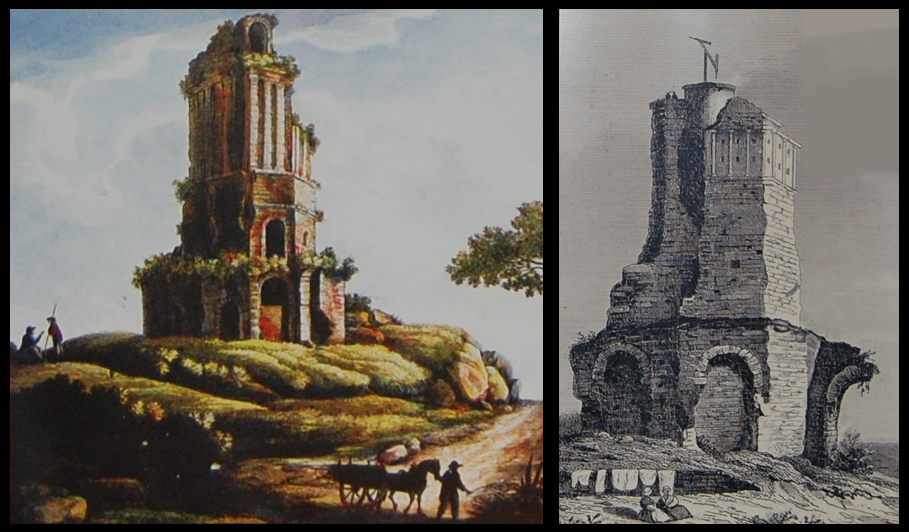
|
|
Today, the tower's attraction is how far one can see from it, rather than that it can be seen from from afar. Visitors in 2008 paid about two euros to climb the spiral stairs around the central supporting pillar and take in the view from the modern viewing platform atop the tower. That view extends across Nimes and the Rhone Valley to Mont Ventoux in the distant Alps. It's also of course a landmark from Nimes, as can be seen in this last image from the Roman amphitheatre in Nimes:
|
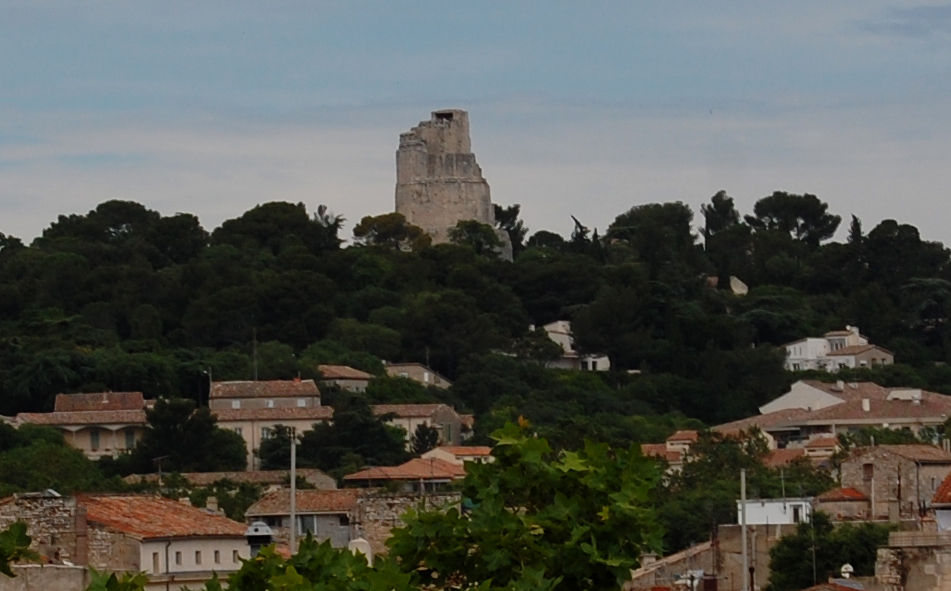
|
|
|
| ----------------------------
Acknowledgements: The historical images above are from displays at le Tour Magne.
|








